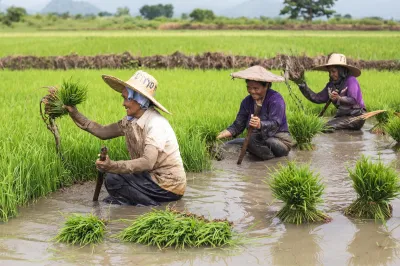GCASH Supports the Philippine Government’s Programs
This is the second post in our series on G2P, branchless banking and financial inclusion. Our first post on Pakistan can be found here.
Globe Telecom is a leading telecommunications company in the Philippines that runs the GCASH mobile money service. We asked Paolo Baltao, the newly appointed President of G-Xchange, Globe’s wholly-owned subsidiary running its m-commerce business, to tell us about Globe’s recent efforts to support the Philippine government’s poverty alleviation programs using the GCASH REMIT platform.
1. Can you explain a little about how the pilot works?
The Conditional Cash Transfer (CCT) Program, also known as Pantawid Pamilyang Pilipino Program (4Ps), is a vital component of the Philippine government’s poverty alleviation agenda. It aims to help the country’s poorest families through cash assistance in order to enable family members to pay for health care, nutrition and education, provided they comply with certain conditions such as keeping children in school, attending regular health check-ups, and vaccinating their children. Grants are currently delivered by the LandBank of the Philippines as over-the-counter payments via cash cards that can be used at ATMs or through off-site payments.
Previously, the Department of Social Welfare and Development (DSWD) and LandBank had to hire helicopters to physically bring the cash to participating beneficiaries in especially remote areas. This was of course very costly. The program organizers looked for means to bring down the cost of grant distribution.
GCASH REMIT, the domestic cash pick-up remittance service of GXI was initially tapped to distribute CCT grants to 10,000 beneficiries in 3 areas. GCASH REMIT partner outlets are already part of the community and these partner outlets need only a mobile phone to process and validate the disbursements. DSWD and LandBank in turn can monitor all these disbursements online and in real-time through the GCASH platform.
2. How did you get involved in the pilot?
Last year, we announced the accreditation of our 18,000 outlets nationwide making us the widest remittance network in the Philippines. Our network of outlets are comprised of Rural Banks, Pawnshops, other Financial Institutions, as well as neighborhood or community establishments (airtime loading stations, cellular phone shops, mini grocery stores, hardware stores, etc). These outlets are located not only in city centers but also deep in the residential barangays (the smallest administrative division in the Philippines).
In 2010, we ran a successful pilot for the World Food Program’s Cash for Work Program to serve a number of their beneficiaries using our technology and pervasive network.
This success story prompted LandBank to explore a partnership with GXI. After several exploratory meetings, LandBank was convinced that GCASH REMIT could address the CCT distribution challenges that they currently encounter and agreed to a small scale pilot in three areas.
3. How many customers are you currently servicing?
GXI using the GCASH REMIT service is currently servicing nearly 300,000 CCT grant beneficiaries. It is being used to distribute an estimated P1 billion (USD 23 million) in grants to almost 70 areas in 16 of the most remote districts.
4. What was the motivation for GXI?
GXI’s goal is to help bring down the cost of remittances and aid in providing financial services, especially to the unbanked and under-banked, through the various services it offers. By participating in this program, GXI is given the opportunity to demonstrate the possibility of merging technology, business, and social responsibility in a program that not only assists the government but also extends services to the poorest of the poor.
The pilot project with DSWD and LandBank also opened the opportunity for GXI to prove that our model works at scale by supporting a program of this magnitude. Proving that the GCASH REMIT model works would not only lead to lowering the costs of disbursing money but give greater convenience to beneficiaries.
5. What has been the feedback from beneficiaries?
CCT grant beneficiaries used to spend a lot for their transportation (as much as 30% of the CCT grants was sometimes spent on travel) and queue up for hours as beneficiaries from other municipalities also lined up at the same cash grant distribution center to claim their money. With GCASH REMIT, beneficiaries need not travel far and they get the CCT cash grants conveniently and on time.
Communities also appreciate the benefits that the pilot brings. With CCT grants being disbursed in the local area, beneficiaries now spend their CCT grants at their community merchants spurring local economic activity.
6. What are your plans for the future in the government payment business?
Essentially, the pilot was done to validate if a third party can handle the disbursements of CCT cash grants as efficiently, if not better, than LandBank. The results of the pilot showed that indeed, disbursement of CCT cash grants through GCASH REMIT was more efficient and more convenient for the beneficiaries.
We are now offering our GCASH REMIT service to other government agencies to address the delays they are encountering in their disbursements. Essentially, we want to help the government deliver payments to beneficiaries as swiftly as a customer gets his or her remittance through GCASH REMIT.
We hope that this pilot with DSWD and LandBank serves as proof that GXI via GCASH REMIT can also service the disbursement requirements of other government agencies in a cost-efficient manner.




Add new comment